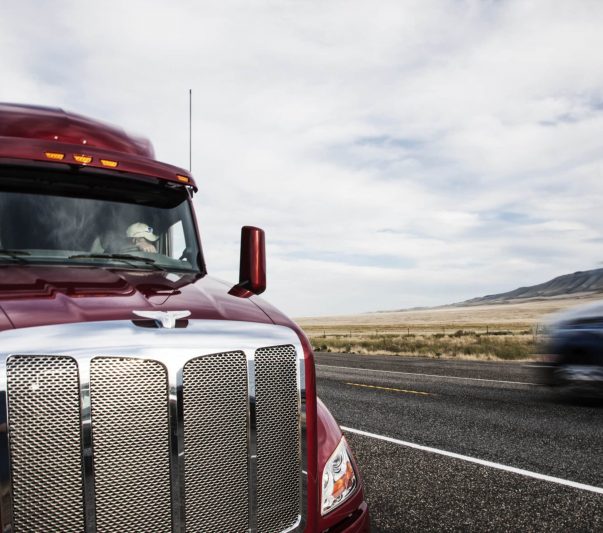Truck accidents can be devastating due to the size and weight of commercial vehicles. When these crashes happen, one of the most important and complex questions is: Who is at fault? Determining fault in a truck accident isn’t always straightforward. It involves careful investigation, understanding of laws, and sometimes multiple parties being responsible.
If you’ve been involved in a truck accident and want to know how fault is determined, it’s a smart idea to contact our truck accident lawyers at Olson Personal Injury Lawyers. We can help you navigate the process, gather evidence, and protect your rights.
What Does “Fault” Mean in a Truck Accident?
In legal terms, fault means responsibility for causing the accident. It’s about proving that someone’s negligence or violation of laws led to the crash. Unlike a simple car accident where fault might be clearer, truck accidents often involve many factors and parties, making fault determination more complex.
Establishing fault is essential because it affects who pays for damages, medical bills, lost wages, and pain and suffering. Getting a clear understanding of fault early on can strengthen your claim or lawsuit.
If you’re unsure about fault or facing disputes, Olson Personal Injury Lawyers has the experience to guide you through these challenges.
Common Factors Considered in Determining Fault
Several key factors play a role in figuring out fault in a truck accident:
- Driver Behavior: Was the truck driver speeding, distracted, fatigued, or under the influence? Driver error is a frequent cause of accidents.
- Truck Maintenance: Did a mechanical failure contribute? Faulty brakes, tires, or other truck parts can cause crashes.
- Cargo Loading: Improperly loaded cargo that shifts or falls can cause loss of control.
- Other Drivers: Sometimes, the fault lies partially or fully with other drivers on the road who may have acted negligently.
- Employer or Trucking Company: If the company failed to maintain the truck or pressured drivers to break safety rules, they may share fault.
- Third Parties: Manufacturers of defective truck parts or maintenance companies can also be responsible.
Because fault can involve multiple parties, investigating the details carefully is critical. Our semi-truck accident lawyers can coordinate with accident reconstruction experts and investigators to build a strong case.
The Role of Evidence in Proving Fault
Determining fault requires gathering and analyzing evidence, such as:
- Police reports and citations
- Driver logs and electronic records
- Surveillance or dashcam footage
- Witness statements
- Truck maintenance and inspection records
- Medical reports documenting injuries
This evidence helps establish what happened and who was negligent. Without solid proof, fault can be disputed, potentially delaying or reducing compensation. If you’re unsure where to start or feel overwhelmed, contacting Olson Personal Injury Lawyers early can make a big difference. We help collect and preserve crucial evidence that supports your claim.
If you’ve been injured in a truck accident, you need a dedicated legal team on your side. We’re committed to protecting your rights and helping you recover the compensation you need to rebuild your life.
How Comparative Fault May Affect Your Case
Colorado follows a comparative fault system. That means fault can be divided between multiple parties based on their degree of responsibility.
For example, if you were partially at fault for the accident, say, by not paying full attention, your percentage of fault might reduce your compensation. If the truck driver or company shares the majority of fault, they remain responsible for most damages.
Understanding how fault percentages work is complicated but important. Olson Personal Injury Lawyers can explain how comparative fault applies to your case and fight for the maximum compensation you deserve.
How Working With a Truck Accident Lawyer Can Help You With Your Case
Truck accident cases often involve multiple parties, complex regulations, and aggressive insurance companies. Having a skilled truck accident lawyer by your side can make all the difference in the outcome of your case.
Here’s how our attorneys at Olson Personal Injury Lawyers can help:
- Thorough Investigation: We dig into every detail, from reviewing driver logs and maintenance records to working with accident reconstruction experts. Our goal is to uncover exactly what happened and who is responsible.
- Identifying All Liable Parties: Truck accidents often involve more than just the driver. We investigate whether the trucking company, cargo loaders, maintenance providers, or parts manufacturers share responsibility for the crash.
- Navigating Colorado’s Comparative Fault Laws: If you’re being unfairly blamed or share partial responsibility, we can help minimize your liability and ensure your compensation reflects the full extent of your damages.
- Handling Insurance Companies: We know the tactics insurers use to reduce or deny claims. Our team negotiates aggressively on your behalf so you’re not pressured into a low settlement.
- Maximizing Compensation: From medical expenses and lost wages to pain and suffering, we build a strong case to pursue the full compensation you deserve.
Truck accident claims are complex, but you don’t have to face them alone. Olson Personal Injury Lawyers has the experience, resources, and determination to protect your rights and fight for the outcome you need.
Contact Olson Personal Injury Lawyers Today
Fault in truck accidents isn’t always simple, and insurance companies may try to minimize or deny your claim. That’s why having an experienced legal team on your side is crucial.
Olson Personal Injury Lawyers specializes in truck accident cases in Colorado. We know how to investigate, negotiate, and if necessary, litigate to hold the right parties accountable.
If you’ve been injured in a truck accident, don’t wait. Contact Olson Personal Injury Lawyers for a free consultation. We’ll review your case, help determine fault, and fight to get you the justice and compensation you deserve.






